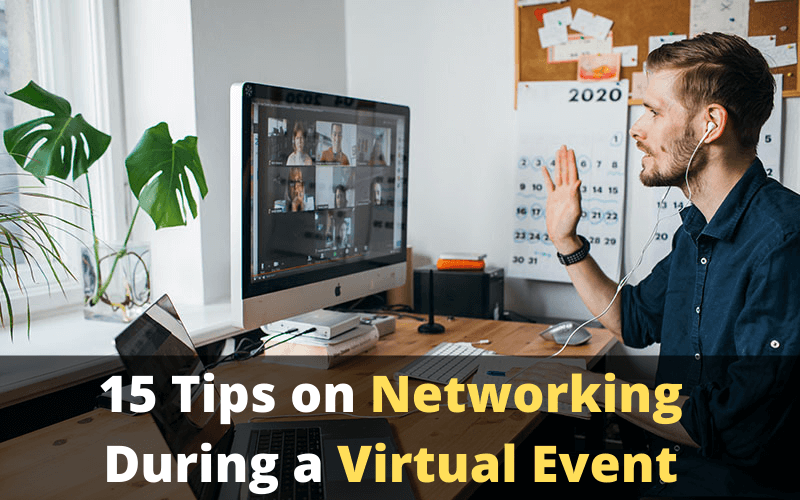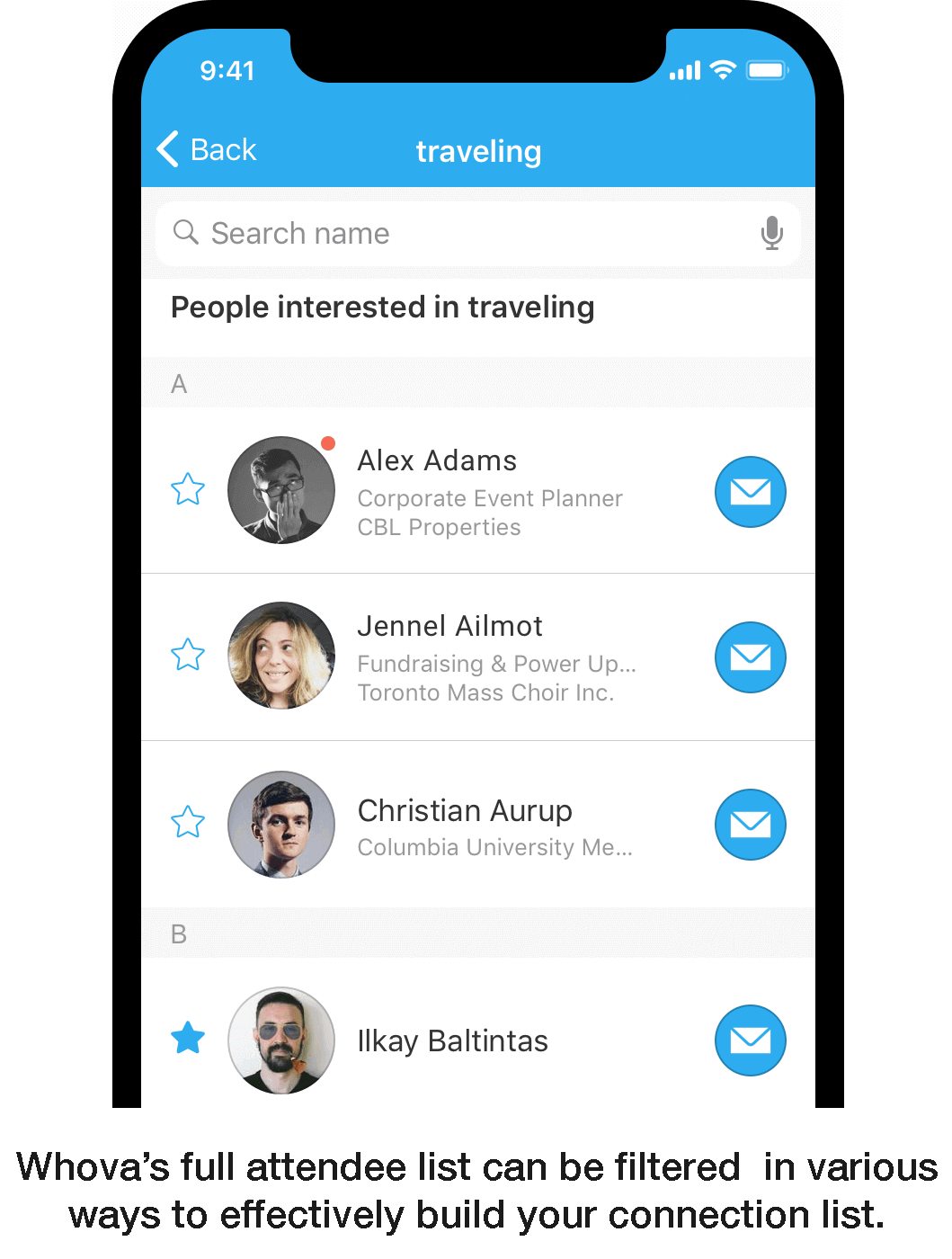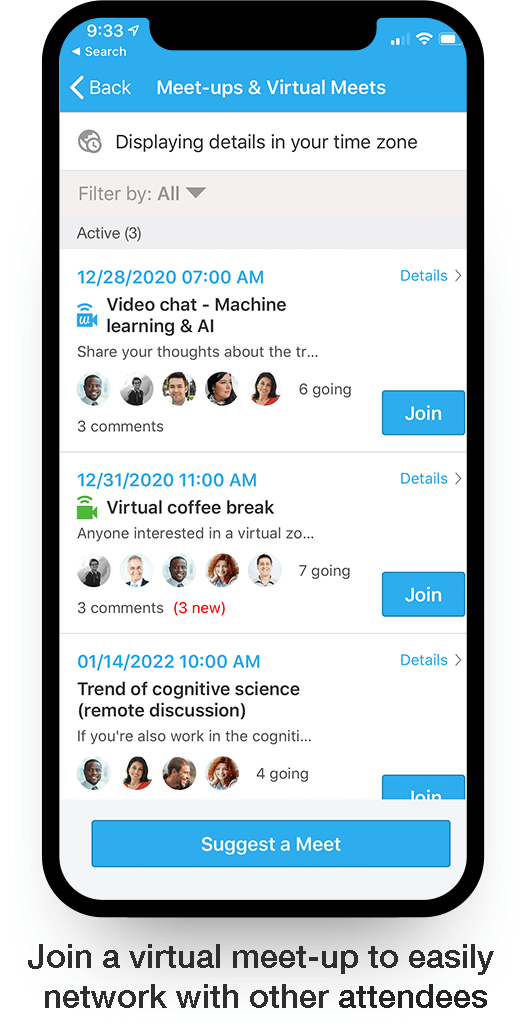
Conferences for just about every industry have moved online. With virtual access to expert speakers and industry leaders, attendees can get all the same information, knowledge, education, and training from the safety of their home office (or couch).
One thing missing from the experience, though, is how to network at virtual events, both the casual kind that happens when you stand in line for coffee and exchange business cards or do the rounds at an after-conference networking event, but conference-goers know that this connection making at a conference is part of the experience and vital to career growth.
Handshakes might be off the table in a time of socially distanced virtual events, but professional connections are still possible. Here are some ways to make one-on-one connections without actually meeting in person:
1. Publicize your attendance pre- and post-event.
The first thing you need to do after registering for a virtual event is getting yourself out there to attract peers and prospects who may also be participating. Include an announcement about the event via:
- If you have a personal webpage or blog, put a notice on it
- LinkedIn (both as an update to your profile and also within appropriate LinkedIn groups)
2. Register on the event guide/mobile event app.
Most virtual events have an online tool or mobile app that lists seminar topics, speakers, and especially attendees. Make sure to submit a bio, contact information, and a professional photo so others can find you. Familiarize yourself with your event’s guide to effectively utilize its features to make connections; for example, Whova’s event app features a community board you can use to start conversations with fellow attendees, among other things.
3. Establish your goals early
Now more than ever, it’s important to have a plan. With a virtual conference, there’s no chance you’ll run into someone in line at a booth or while getting coffee or grabbing lunch. Networking virtually requires more intentionality and planning, but the trade-off in time will be about the same since you won’t be traveling to a conference center or hurrying from session to session.
Make a list of your networking goals. Goals can include “introduce yourself to five new people” or “trade emails with ten attendees”, but making a list will help you focus your efforts and help you know where and how to invest your time to further your personal career success and professional advancement.
4. Cull the attendee list prior to the event.

Most event organizers grant access to their event guides and apps in advance of the start date for attendees to connect. Go through yours and organize potential networking targets in a thoughtful manner, prioritizing as appropriate for pre- and post-event outreach via social media, email, or phone.
If your event is using virtual event platforms like Whova, it already has the complete attendee list with fully-enriched profiles. Remember to check out the list and their profiles to identify your networking targets. Once you find the right person, start the conversation casually with “say-hi” and messages. You can also exchange contact with them. Also, don’t forget to leave a note about the person in the app for later reference.
5. Get busy on social media.
Most events have hashtags within registration packets or on event websites along with official/preferred social media platforms like Twitter. Post your thoughts on presentations, screengrabs of the live events, and other feedback during and after the event and search for event hashtags to identify other attendees.
6. Share insightful comments on the event platform.
Showcase your expertise by engaging with targeted sessions and presenters via your event apps community board. Comment on topics, and actively participate in live Q&A via engagement tools. Remember not to overdo it; one question and/or comment per session so as not to hijack the conversation.
7. Engage in real-time messaging during presentations.
In addition to posting public-facing comments and questions, utilize private messaging tools within your event app to ask new connections what they think of a particular topic or idea at the moment it is presented. In addition to demonstrating your full engagement in the virtual event, you will be building trust with your new contact, showing that you value their opinion as opposed to just contacting them in a sales capacity.
8. Participate in virtual event games.
Gamification is just as popular with virtual events as it is on-site. If event hosts or sponsors hold an online scavenger hunt, bingo, or trivia, be sure to participate to attract prospects with your personality in addition to your business acumen. It will help boost your virtual event engagement experience.
Whova has several networking games that are suitable for virtual events. For example, the photo contest, leaderboard contest, and the fun ice-breaker questions. If your event is using Whova, make sure to check them out, and you might be able to receive a prize from the organizers if you are the winner:)
9. Share interesting and informative articles with others.
Get the most out of your event community discussion board by posting URLs of educational—not sales or marketing—articles, blog posts, or infographics. These don’t necessarily need to be original content you or your company produced; they can be public-facing news or opinion pieces dealing with relevant subject matter. Try using introductions along the lines of, “As Presenter X was describing, this is a very relevant topic:” in front of the actual URL. This will help differentiate you from others simply sharing their opinions.
 10. Participate in a virtual hangout event.
10. Participate in a virtual hangout event.
Some event hosts will have a kick-off hangout on Google, Zoom, or other cloud-based virtual event platforms prior to their event, or “virtual coffee break” hangouts during breaks throughout the event. If none are scheduled—and even if some are—consider organizing your own to socialize and discuss various topics so you can get to know your fellow attendees (and help them get to know you).
If you are using Whova for your event, chances are there are already virtual meet-ups set up by others. You may pick and join one, or propose one yourself as well. Note that you can participate both on your phone and on your computer.
11. Sign-up for a matchmaking service.
If your event sponsor provides an automated tool to connect you with like-minded business professionals, take the time to go through any questionnaire they provide to collect detailed information. If none is provided, include a few bullets in your registration bio about what you are looking for in terms of professional connections.
12. Create shareable visuals, videos, and marketing collateral.
In researching events and attendees, find out what products, services, or expertise you might be able to provide interested parties. Have “info buckets” ready to copy/paste into private messages/chats/emails, or publish downloadable pdfs, infographics, and videos online in advance so you can share their URLs upon request. What you do NOT want to do is simply tell someone asking about your company to, “Go check out our website!” which will take them farther away from the information they seek and risk losing their interest.
13. Set aside time for your event.
If you’re spending the time and effort to participate in a virtual event, make sure you have blocked-off time in your calendar for the entire event, including pre- and post-event buffers to chat with new connections. Invest in comfortable surroundings with water, coffee, and snacks as appropriate, and make sure you are in an environment free from distractions. This way you will be able to delve more deeply into your networking efforts and realize a greater R.O.I. on your event participation.
14. Follow-up with your new connections.
Stay in front of your expanded network while the event is still fresh in everyone’s mind. In the first three days after a virtual event, be sure to:
- Email your event contacts with thank-yous or requests for further conversation
- Search social media platforms for mention of the event or hashtags; connect to individuals talking about the event
- Cross-reference your new connections on LinkedIn, sending link requests with reference to the event
- Double (and triple) check your notes from the event to make sure you setup and attend any post-event meetings/calls you set up during the event
Also, be sure to check your email regularly for any similar requests from people trying to connect to you, paying special attention to your spam folder so you don’t miss anything.
15. Post reviews online after the event.
Most every virtual event organizer will email attendees for input. Be honest while being complimentary; the organizer may select your feedback to be featured on their website and social media, providing extra free exposure. Additionally, seek-out related online review forums or social media to post your feedback in a similar manner, such as LinkedIn or Facebook groups.
Just because you can’t shake hands doesn’t mean you can’t network!
You can still get connected to new business opportunities and strategic relationships without attending an in-person event. Use the tips above about how to network at virtual conferences to get started on your road to leveraging the unique benefits of virtual events to making new, meaningful connections.
If you are interested in using Whova for the event you are planning and would like to know more about Whova, just click the button below. Our event consultants will contact you as soon as possible.
Related Case Studies
